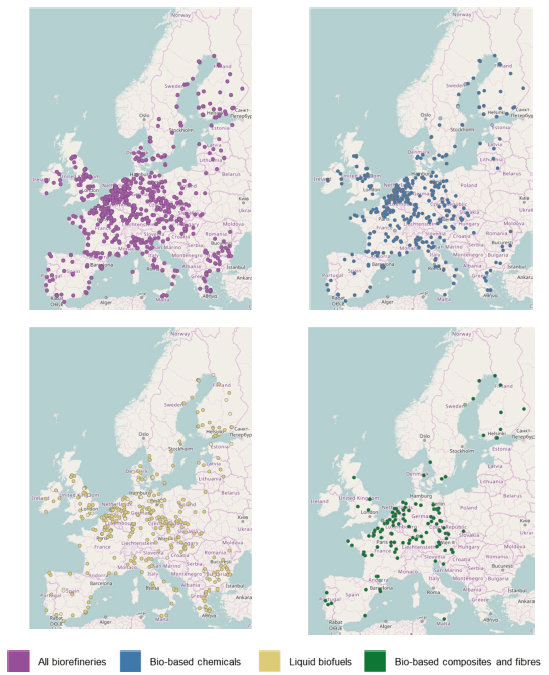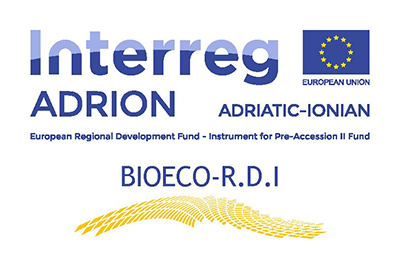
Current trends in the bio-economy sector
Five main objectives from 2012 Bioeconomy Strategy are still relevant and are the basis for new actions predicted in the updated version of the 2012 Bioeconomy Strategy (European Commission, 2018):
- Ensuring food and nutrition security
- Managing natural resources sustainably
- Reducing dependence on non-renewable, unsustainable resources whether sourced domestically or from abroad
- Mitigating and adopting to climate change
- Strengthening European competitiveness and creating jobs
The key actions that are leading towards more sustainable bioeconomy in the context of evolved policy priorities are (European Commission, 2018):
A) Strengthen and scale-up the bio-based sectors, unlock investments and markets
The 2017 Review concluded that “… Further mobilisation of investments is still needed, which requires a stable regulatory environment” and that “… Funding of high risk investments is not well supported by current EU instruments”. Matching the financing needs of the EU sustainable bioeconomy relies heavily on private investment which should be extensively further mobilised. As an illustration, according to some estimates approximately 300 biorefineries will need to be deployed in Europe by 2030 in order to meet the growing EU market demand in this sector.
Strengthening and scaling-up the bio-based sector focuses on the research of biorefineries in the EU. The number and location of biorefineries differ from study to study due to differences in definition of biorefinery. Figure 1 is showing the biorefineries distribution in the EU. As we can see, the distribution of biorefineries is not even throughout Member States. Furthermore none of the project regions has a biorefinery that would enable the production of more added value materials or products deriving from different kinds of biomass.

Figure 1: Biorefineries distribution in the EU as of March 2018. Purple dots indicate all biorefineries (803 in total) Blue dots indicate the 507 biorefineries producing bio-based chemicals, yellow dots indicate the 363 biorefineries producing liquid biofuels and the green dots indicate the 141 biorefineries producing bio-based composites and fibres. It has to be noted that some biorefineries produce more than one product category and are thus shown in more than one map. Dots in lighter colour in the three last figures indicate facilities that are currently inactive (but not necessarily as permanent status). Most biorefineries correspond with location of chemical industry clusters and location of ports. Highest density of facilities is in Belgium, Netherlands and some highly industrialised regions of Germany, France and Italy. Source: Parisi, C. 2018. Research Brief on biorefineries distribution in the EU. Joint Research Centre.
B) Deploy local bioeconomies rapidly across Europe
One aim of the European Bioeconomy Strategy is to deploy the bioeconomies across Europe to ensure that the bioeconomy as a whole is a vehicle for inclusive and sustainable growth at the local level. This includes local development in Member States and their territories, such as their regions, rural areas, cities and coastal areas.
A deployment agenda for sustainable food and farming systems, forestry and bio-based production in a circular economy will provide a long-term vision on pathways to development of the bioeconomy and its sustainability. It will be complemented by open innovation spaces, which will allow, on a shorter term, integrating actors across value chains to experiment and work together on new solutions that will provide enhanced sustainability and circularity, and which are adapted to local conditions.
C) Understand the ecological boundaries of the bioeconomy
The objective of the following actions is to strengthen the resilience of land and sea ecosystems, ensuring their contribution to climate mitigation, and enhancing their biodiversity. In addition, they should help us move towards sustainable, circular and post-waste food systems and mobilise the full potential of biological resources from primary production on land and sea. Promoting connections between sectors of the bioeconomy, including the bio-based sector, will also be addressed. It responds to the need to operate the European bioeconomy within the limits of our planet and supports all objectives of the Strategy.
The environment, natural resources, ecosystems and biodiversity are under severe pressure at global and local scale. It is therefore imperative that the bioeconomy is developed in a way that helps reduce environmental pressures, values biodiversity and contributes to enhance the provision of all ecosystem services. Sustaining nature’s contribution to humanity requires the maintenance of a healthy planet, resilient ecosystems, an efficient use of natural resources, and conservation and sustainable management of biodiversity. Yet, European biodiversity is in continuous decline. It is therefore necessary to have at any time the required data, information, and knowledge to judge if the observed developments are in the right direction and to anticipate if possible actions are likely to promote the desired trends.
 Go to the Bioeco R.D.I. website
Go to the Bioeco R.D.I. website


